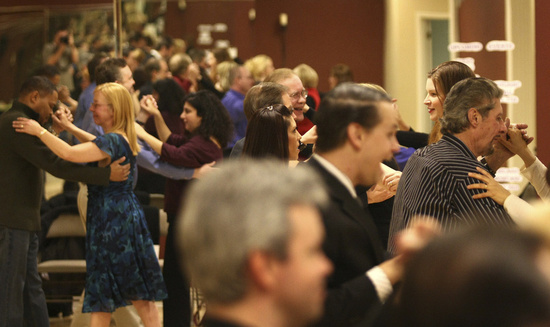Tags
ballroom, ballroom dance bellevue, ballroom dance classes, ballroom dance competition, ballroom dance lessons, ballroom dance redmond, ballroom dance studio, ballroom dancing, ballroom dancing competition, ballroom studio bellevue, ballroom studio redmond, Briora Ballroom, cha cha, dance, dancers, eastside, exercise, fitness, foxtrot, fun, health, jive, latin, quickstep, rumba, samba, seattle, social dance, standard, swing, tango, waltz

Many of us spend our whole lives trying to “find ourselves.” We go on a grand search to chip away at some elusive barrier that is magically preventing us from understanding our identity and life’s purpose. We travel the world, we pick up new hobbies, we hunger, and we try to lose ourselves to find ourselves. But this search doesn’t always have to manifest itself in outward action—even if we’re not struggling to find ourselves, our friends and family are, and we are infected with that lingering state of mind.
Unfortunately, many of us take this state of mind with us on the dance floor. I know I do. And it doesn’t matter if we’re competitive or social dancers, whether we turn to dance for expression or exercise. So many of us come to a standstill when we try to “find” the dancer we should be. We search for certain feelings, actions and sensations—waiting for them to come to us and feeling utterly hopeless when they fall outside of our mental and physical grasp.
But instead of trying to “find yourself,” focus your whole life on creating yourself. Use dance as a tool to build yourself up, to explore self-realization and growth. When it comes to the dance floor, be ambitious about the dancer you’d like to become and stop scapegoating the required effort onto mysterious externalities.
Instead of relying on your teacher, dance partner, or coach to shape you into a good dancer, realize that your mind is the key to achieving that goal. At any level, consider the following:
Become Aware of Your Motivations for Pursuing Dance

Allow yourself to self-reflect, to understand why you are drawn to dance. Often, these motivations reveal much about all of our endeavors, and can in turn help us understand what type of dancers (and people) we want to become.
Do you love ballroom because you enjoy socializing and dancing with others? Are you trying to conquer the samba in order to lose a couple of inches off your waist? To improve your health? Are you passionate about performing in front of others? Be conscious, always.
Set Weekly Goals

Once you understand your motivations, construct and set attainable, weekly goals for yourself. By the end of this week I want to feel confident dancing my silver tango routine. Or at the Friday party I want to dance with at least 4 different partners. Or, even more simply: I want to do the best natural turn at the end of my next private lesson.
By deliberately identifying areas for improvement, and pacing yourself to select goals that are reasonable but not overwhelming, you set yourself up for success. Conquering one small goal a week positively reinforces your commitment and state of mind.
Make sure to share these goals with your teachers, so that they can help you succeed. Still, exercise self-reliance and don’t become passive, depending on your teachers to conquer those goals for you. We rely on our teachers to tell us what we’re good at without identifying those strengths ourselves or understanding what we’d like to excel at. Seek their advice, wisdom, and experience but remember that your body and mind have to do the work.
Self-Attribute Both Success and Failure

In our everyday lives, many of us choose to attribute successes to our hard work, our ambition, our perseverance. When it comes to failures, on the other hand, we sometimes choose to shrug off personal responsibility, ascribing unsuccessful endeavors to forces beyond our control. The rest of us, those who are self-critical, do the opposite.
Bringing either of these attitudes with you to the dance floor is toxic. In dance, you must train your mind to understand that both your successes and failures should be self-attributed.
When dancing with a partner, frustration comes easy, and blame is often thrown on the actions of the other person. Of course I couldn’t get through the entire quickstep, you were pushing me the whole time! Or, on the other side of the spectrum, we think ‘of course that Cha-Cha was great, my teacher knows what they’re doing.’
In both these scenarios, you are passing off your responsibility to the hands of others, allowing them to dictate your success. Instead, focus your introspection on what you did to contribute to the success of a figure, routine, or performance. Likewise, consider how you may have contributed to a failure—in ballroom, there can never be only one person at fault.
Make Room for Inspiration

Watch dancers that are better than you. Maybe it’s a social dancer who makes leading look effortless or a competitive dancer who has perfect rumba walks. Rather than letting their excellence overwhelm you, allow room for inspiration to blossom.
Identify what you like about their dancing or attitude, and consider whether those factors align with your own motivations and goals. Don’t expect to “find yourself” in their dancing, but rather talk to your teachers or partner about what steps you can take to reach that level of excellence for yourself.

Great advice! Can’t wait to try it.